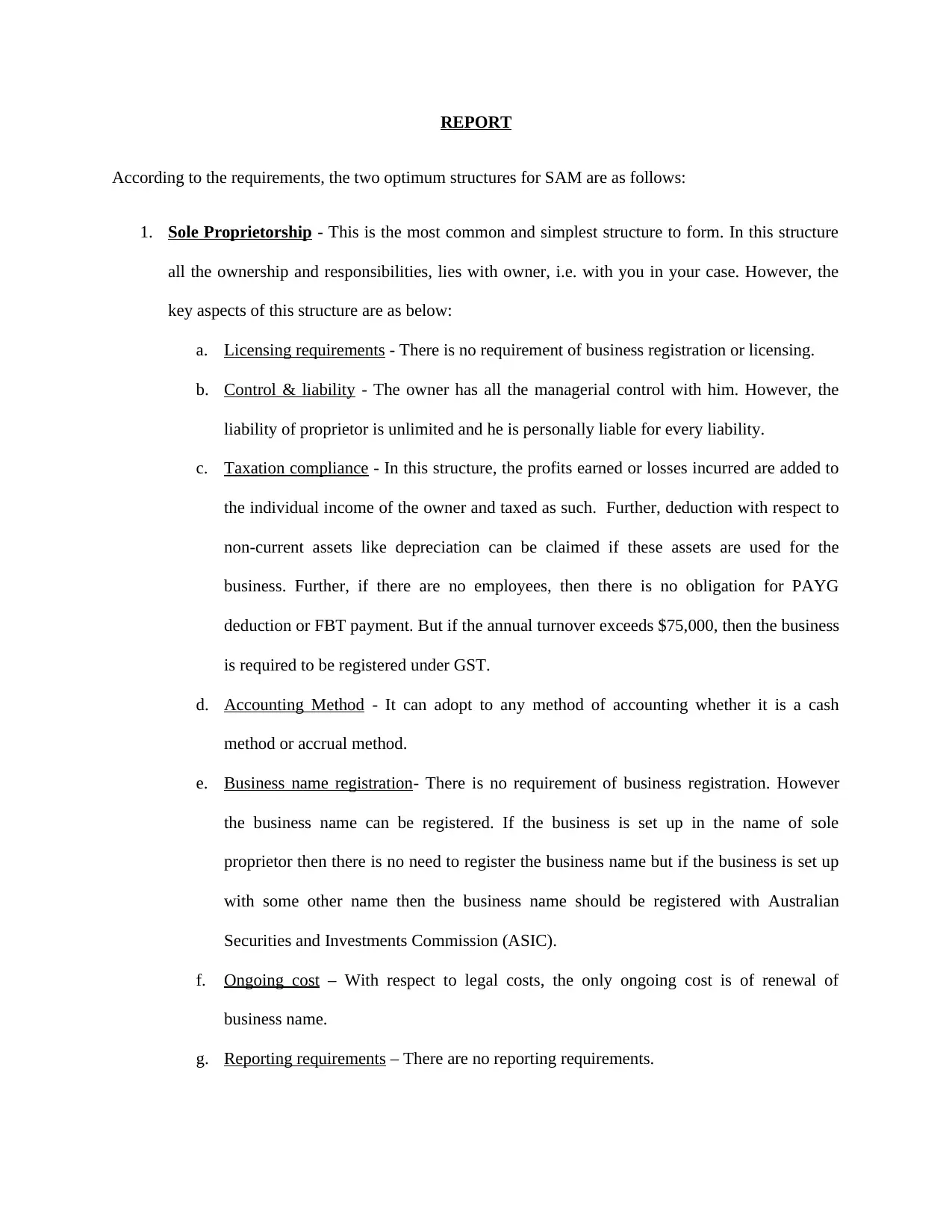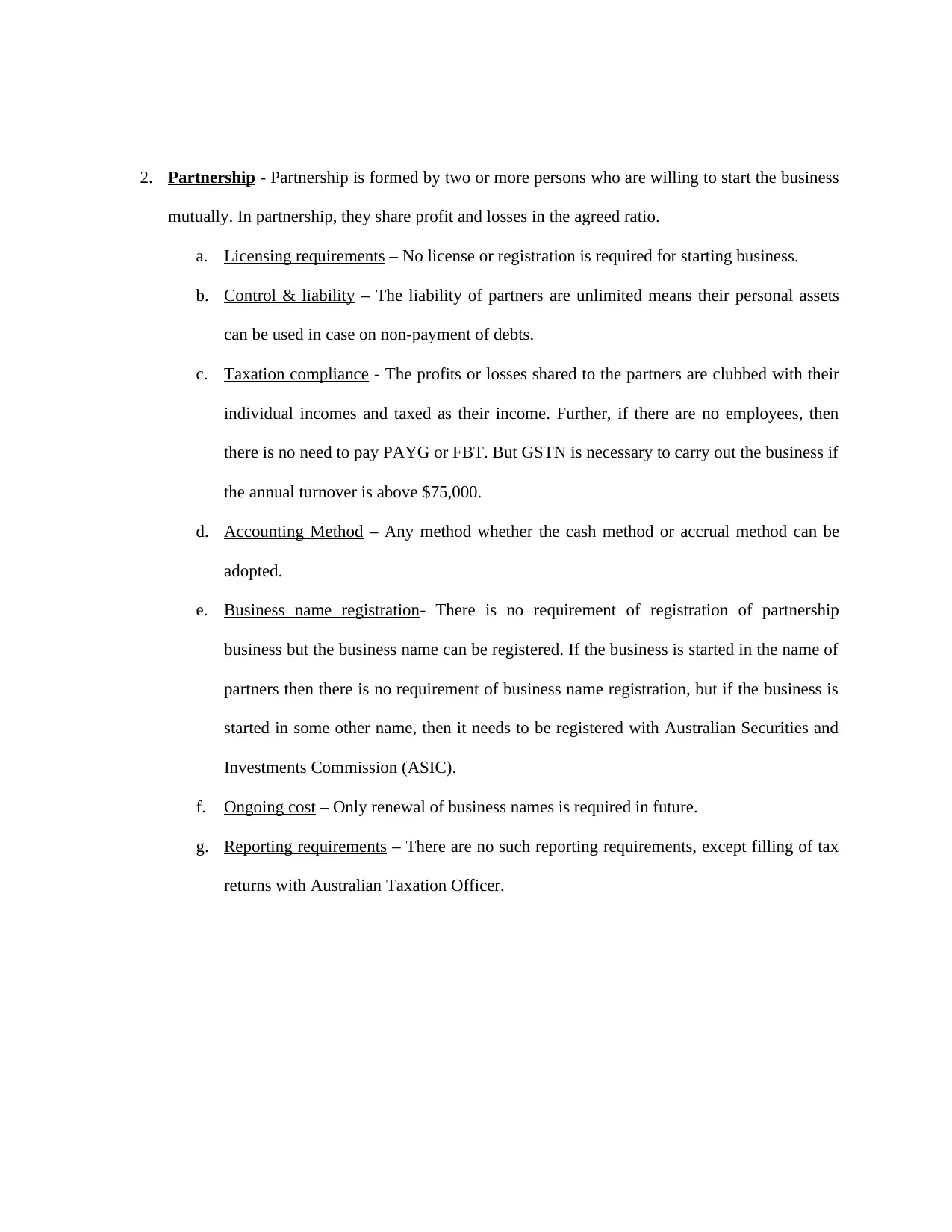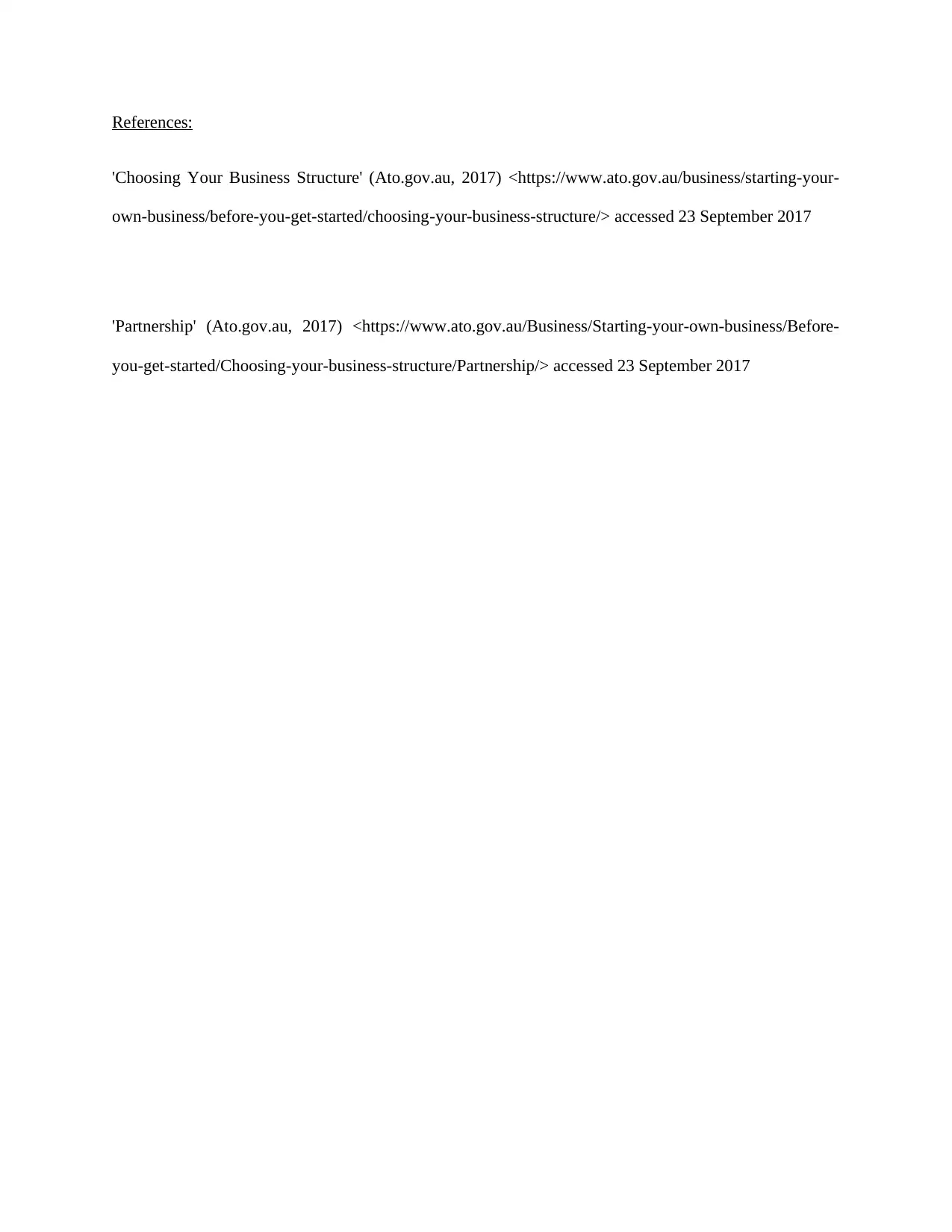Report on Business Structure: Sole Proprietorship and Partnership
VerifiedAdded on 2020/04/07
|3
|597
|107
Report
AI Summary
This report provides a comparative analysis of two common business structures: sole proprietorship and partnership. It details the key aspects of each structure, including licensing requirements, liability, taxation compliance, accounting methods, business name registration, ongoing costs, and reporting requirements. The report highlights the advantages and disadvantages of each structure, referencing the Australian Taxation Office (ATO) guidelines. It covers aspects like personal liability in sole proprietorships and the shared responsibilities in partnerships, along with implications for income tax and Goods and Services Tax (GST). The report offers a comprehensive overview to assist in understanding and choosing the most suitable business structure based on specific needs and circumstances.
1 out of 3










![[object Object]](/_next/static/media/star-bottom.7253800d.svg)